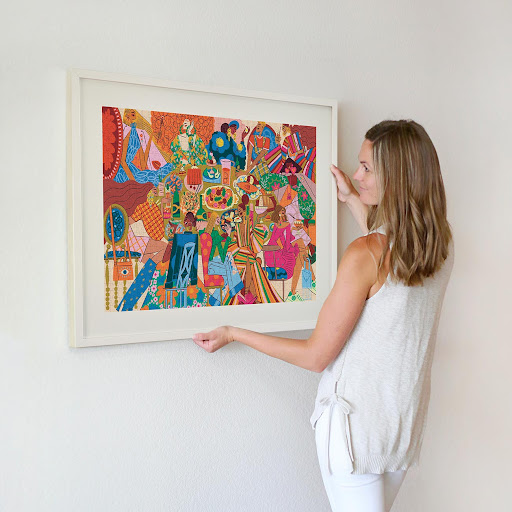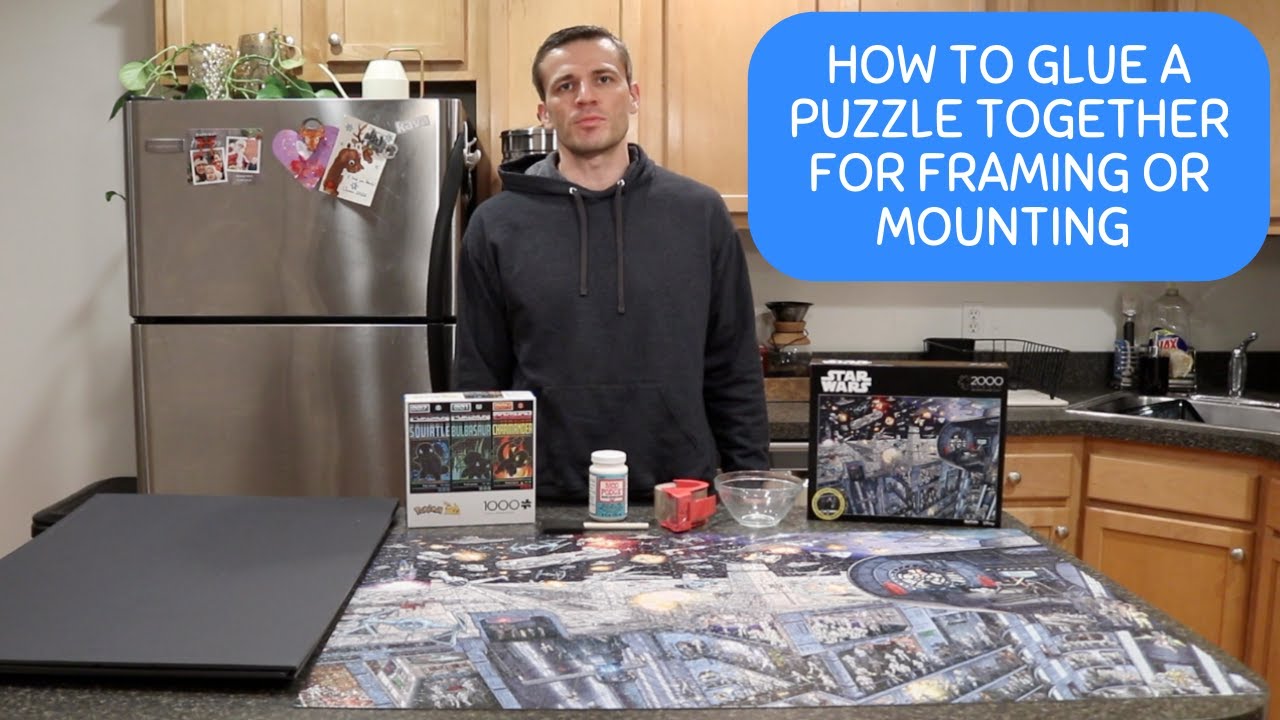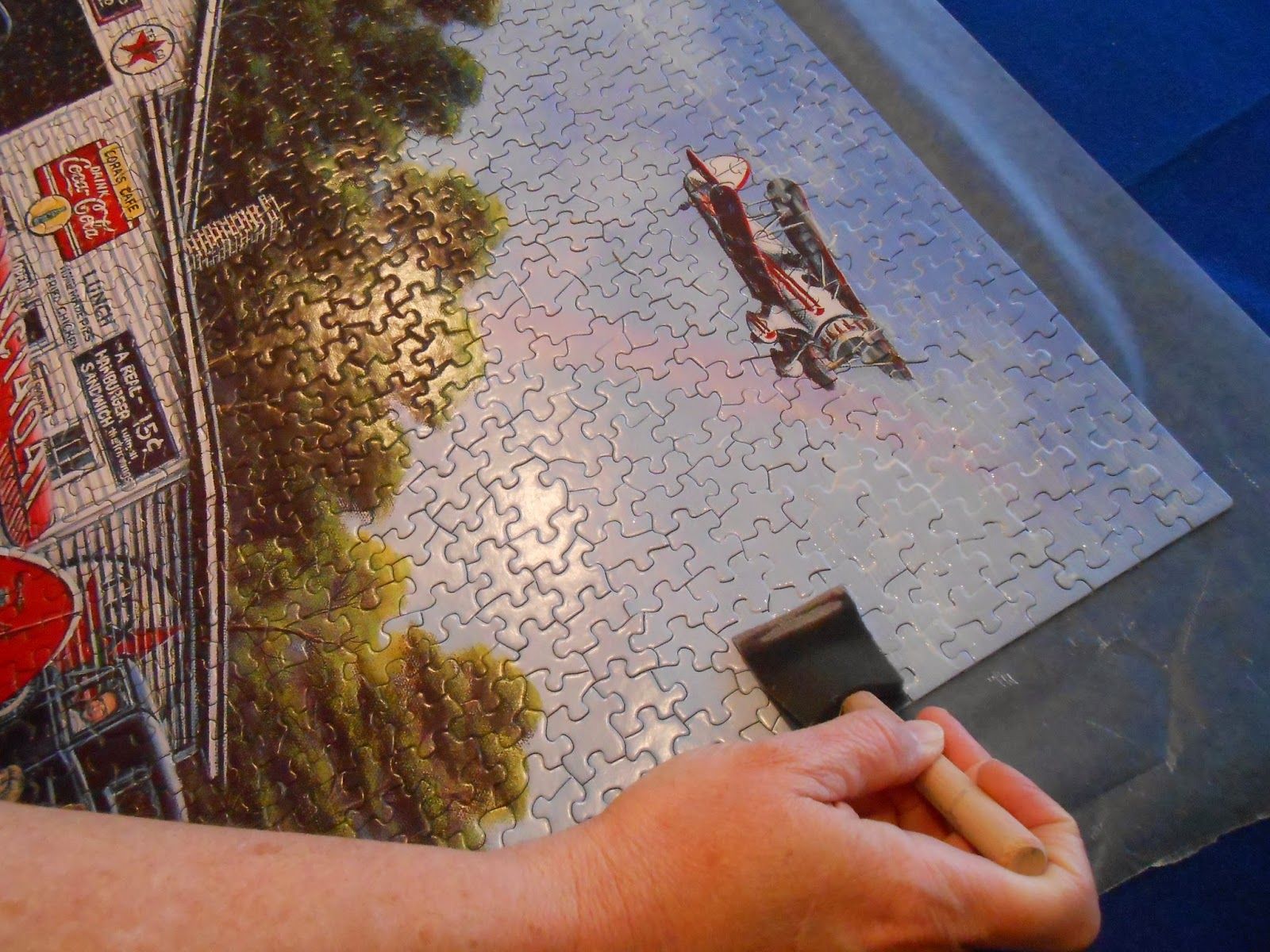How To Glue A Puzzle For Framing - 5 Foolproof Steps
Gluing a puzzle for framing has never been easier. Get a complete guide to preserving your puzzles and turning them into timeless art.

Henrik Schmidt
Feb 09, 2025
Finishing a puzzle is a moment of pride and satisfaction that frequently feels more like an achievement than simply finishing a game. If it's stunning views, a beloved pop culture item, or a complex design, many people consider that accomplishment to be a treasured work of art when it is preserved by framing the puzzle.
In order to keep the puzzle intact and prepared for display, glueing is a crucial stage in this procedure. To help you glue and frame your puzzle like an expert, this article will take you step-by-step through the entire procedure.
Why Glue A Puzzle For Framing?
When deciding how to frame a puzzle, you might wonder: “Do I really need to glue it?” The answer is a resounding yes, and here’s why.
- Preservation: Without glue, the puzzle pieces can shift, fall apart, or warp over time. Gluing bonds the pieces together permanently, ensuring the puzzle remains stable and intact for years.
- A Professional Look: Glued puzzles have a smooth, polished finish. This prevents gaps between pieces from showing in the frame, giving it a clean, high-quality appearance.
- Sentimental Value: Puzzles are often framed because they have unique importance, perhaps it's a lovely picture, a sentimental present, or an enjoyable memory of solving it with loved ones. Gluing guarantees the best possible preservation of these memories.
Some alternatives, like puzzle mats or double-sided tape, can hold the puzzle temporarily, but they lack the durability and aesthetic appeal of gluing. If you want your puzzle to stand the test of time, glue is the way to go.
Materials Needed To Glue A Puzzle
Before you start, it’s essential to gather the right materials. Here’s what you’ll need:
- Puzzle Glue: This is the most important item. Puzzle glue is specifically designed to hold pieces together without damaging the image. It dries clear and creates a smooth finish. Brands like Mod Podge Puzzle Saver or MasterPieces Puzzle Glueare excellent choices.
- Applicator: Most puzzle glues come with an applicator, but if yours doesn’t, you can use a foam brush, a small roller, or even a plastic card to spread the glue evenly.
- Wax Paper: This protects your workspace from glue spills and prevents the puzzle from sticking to the surface while drying.
- Backing Board (Optional): A sturdy backing board, like foam board or cardboard, adds extra stability to the puzzle, making it easier to frame.
- Frame: Choose a frame that matches your puzzle’s size and style. A frame with a glass or acrylic cover will protect your puzzle from dust and damage.
Step-by-Step Guide Directions

How to Glue a Puzzle Together for Framing or Mounting
1. Prepare Your Workspace
Start by preparing a clean, flat workspace large enough for your puzzle. Protect the surface with wax paper or newspaper to catch any glue drips. If your puzzle is on a mat or board, gently slide it onto the protective layer, ensuring it lies perfectly flat.
Uneven surfaces can interfere with the glue application and drying process. Adding puzzle gamesto your activities not only enhances creativity but also sharpens problem-solving skills, making such projects even more enjoyable.
2. Secure The Puzzle
To ensure your puzzle doesn’t shift or fall apart during the gluing process, it’s essential to secure it in place. Here’s how:
- Gently slide a piece of wax paper or a thin board underneath the puzzle to act as a base.
- If your puzzle is large, consider taping the edges of the wax paper to your workspace to keep it from moving.
Taking the time to secure the puzzle will make the gluing process much easier and prevent accidental damage.
3. Apply The Glue
Now it’s time to glue the puzzle. This step requires patience and precision.
- Start in the Center: Pour a small amount of glue onto the center of the puzzle. Puzzle glue is typically thick and spreads easily.
- Spread Evenly: Use the applicator to spread the glue outward from the center, covering every piece. Make sure to press the glue into the cracks between the pieces to strengthen the bond.
- Work in Sections: For larger puzzles, focus on one section at a time to avoid the glue drying before you spread it.
- Thin Layers Are Key: Avoid using too much glue in one area, as this can cause streaks or bubbles. A thin, even layer is all you need for a smooth finish.
- Don’t Forget the Edges: Pay extra attention to the edges of the puzzle, as these are most prone to lifting over time.
If desired, you can also glue the back of the puzzle once the front is dry. This adds extra stability, especially for large or intricate puzzles.
4. Let The Glue Dry
Drying is a critical step that requires patience. Most puzzle glues take about 4-6 hours to dry completely, but it’s best to leave it overnight to be sure.
- Avoid touching or moving the puzzle during this time, as this can cause cracks or smudges.
- Check the drying progress in a well-lit area to ensure the glue is setting evenly.
Once the glue is fully dry, the puzzle will feel firm and ready for framing.
5. Add A Backing Board (Optional)
If your puzzle is large or if you want extra support, attach a backing board.
- Cut a piece of foam board or cardboard to the same size as your puzzle.
- Apply a thin layer of glue to the back of the puzzle and carefully press it onto the board.
- Let it dry completely before moving on to the framing step.
Tips For Framing Your Puzzle
- Choose the Right Frame: Pick a frame that fits your puzzle perfectly. If the puzzle is slightly smaller than the frame, use a mat or spacers to center it.
- Use a Protective Cover: Frames with glass or acrylic covers protect your puzzle from dust, moisture, and fading.
- Secure the Puzzle: Once your puzzle is in the frame, ensure it’s firmly held in place by the backing of the frame.
Common Mistakes To Avoid
- Using the Wrong Glue: Regular glue can damage your puzzle or leave streaks. Always use puzzle-specific glue.
- Skipping Drying Time: Rushing to frame the puzzle before the glue is dry can ruin the finish.
- Uneven Glue Application: Take your time to spread the glue evenly to avoid bubbles or streaks.
- Neglecting the Edges: Loose edges can compromise the puzzle’s durability over time.
FAQs
What Glue Works Best For Puzzles?
Puzzle-specific glues like Mod Podge Puzzle Saver are the best choice. They dry clear, bond the pieces well, and provide a polished finish.
Can I Frame A Puzzle Without Gluing It?
You can, but it’s not recommended. Without glue, the pieces may shift or fall apart, even inside the frame.
How Long Does It Take For Puzzle Glue To Dry?
Most puzzle glues dry within 4-6 hours, but leaving it overnight ensures the glue is completely set.
How Do I Fix Mistakes While Gluing A Puzzle?
If you notice streaks or bubbles, gently smooth them out with the applicator while the glue is still wet. Adding a second thin layer can also fix imperfections.
Do I Need A Special Frame For Puzzles?
No, but using a frame with a glass or acrylic cover and sturdy backing will give the best results.
Final Words
When you glue and frame a puzzle, your labors become a permanent work of art. By following these instructions, you can make sure your puzzle will stay in perfect shape for many years to come, if you're using it as a remembrance or as a beautiful piece for your house. Enjoy the process, take your time, and let your completed puzzle be a proud representation of your perseverance and inventiveness.
